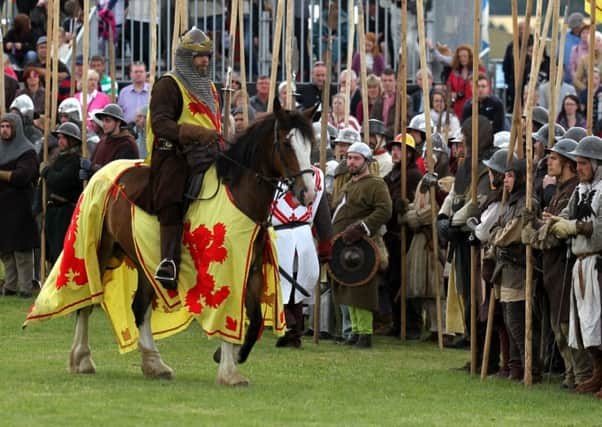Scottish fact of the week: Battle of Bannockburn


The odds were not in Robert the Bruce’s favour. Leading Scottish troops against an army advancing north led by King Edward II that outnumbered them by about three to one, Robert the Bruce faced not only a numerical disadvantage, but an emotional one as well. His wife, daughter and sisters had been held captive in England for several years, and during a long campaign against the English he had seen allies and family members killed, including his brothers Neil, Thomas and Alexander.
The battle, which took place in 1314 during the wars of Scottish independence, was sparked by Robert’s sudden capture of the throne in 1306. Bannockburn was, ultimately, a struggle for control of Stirling Castle, a strategically vital stronghold that acted as the gateway to the Highlands for the English. At this time, the Scots were in control of the castle and the English surrounding it were on the verge of giving it up.
Advertisement
Hide AdRobert’s army took advantage of the difficult terrain by digging traps on the flanks so that the English would be forced to battle them head on, thus diminishing their numerical superiority.
In one of the first major skirmishes of the two-day battle, Robert was attacked by English knight Henry de Bohun. Bohun charged at the Scottish king with a lance and, once Robert had dodged the attack, split De Bohun’s head with an axe, killing him instantly.
The English withdrew after a bloody day of fighting, sustaining heavy losses as they failed to deal with the three main schiltroms (spear-like military formations) of the Scots.
The second day was to prove even more disastrous as the English retreated on the other side of the Bannock Burn to plot their next move. A Scottish knight who had been fighting for the King Edward II had defected and informed Robert of the low morale of the English troops, and encouraged the Scots to attack aggressively. An advance from Sir Robert Keith, fighting with the Scots, countered English archers who were hemmed in with a cavalry charge as other schiltroms ground down the English. What remained of the English troops’ discipline evaporated as King Edward fled to England via Castle Dunbar. It is estimated that about 11,000 of the 16,000 English footsoldiers fighting for King Edward II were killed. The victory meant Robert could negotiate the release of his wife and daughters, and paved the way to a short period where Scotland had the upper hand against the English until the Treaty of Edinburgh-Northampton of 1328, which led to a short-term cessation of hostilities until the second wave of the wars of independence that began in 1332.
SEE ALSO